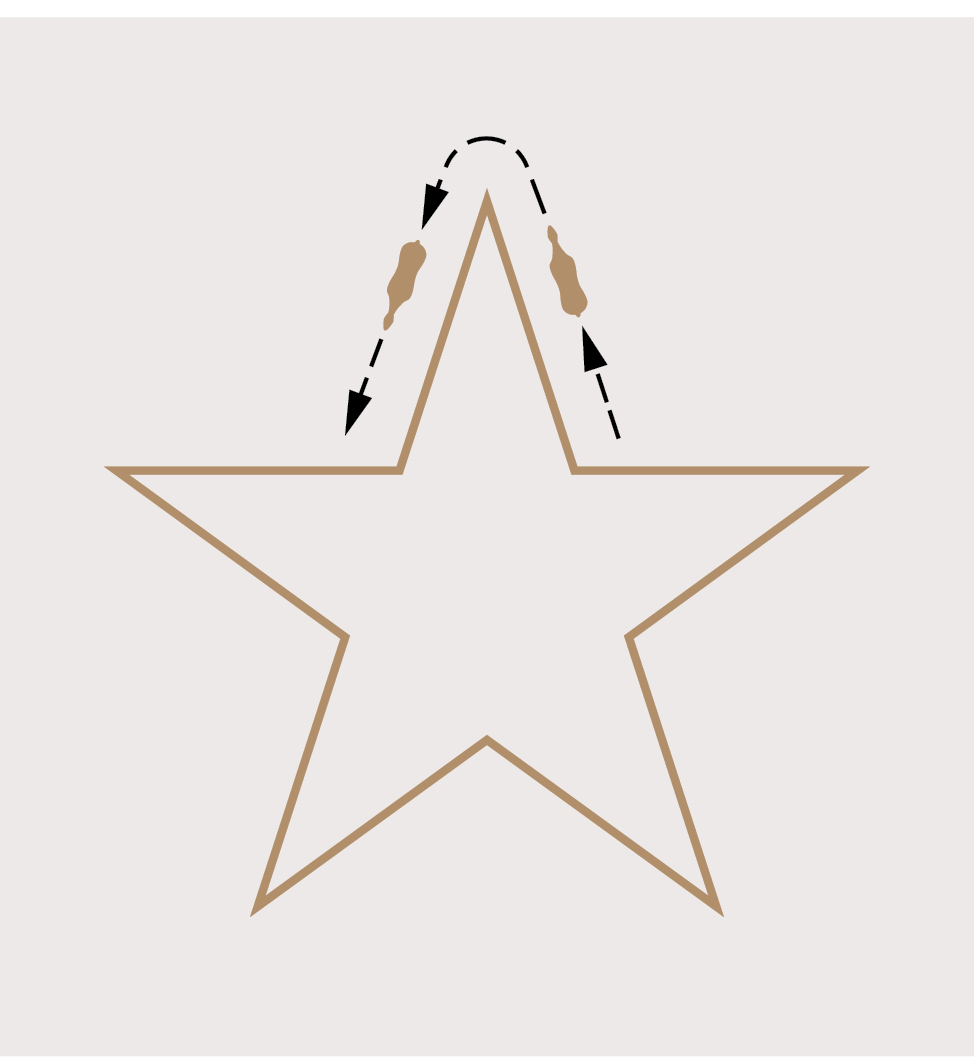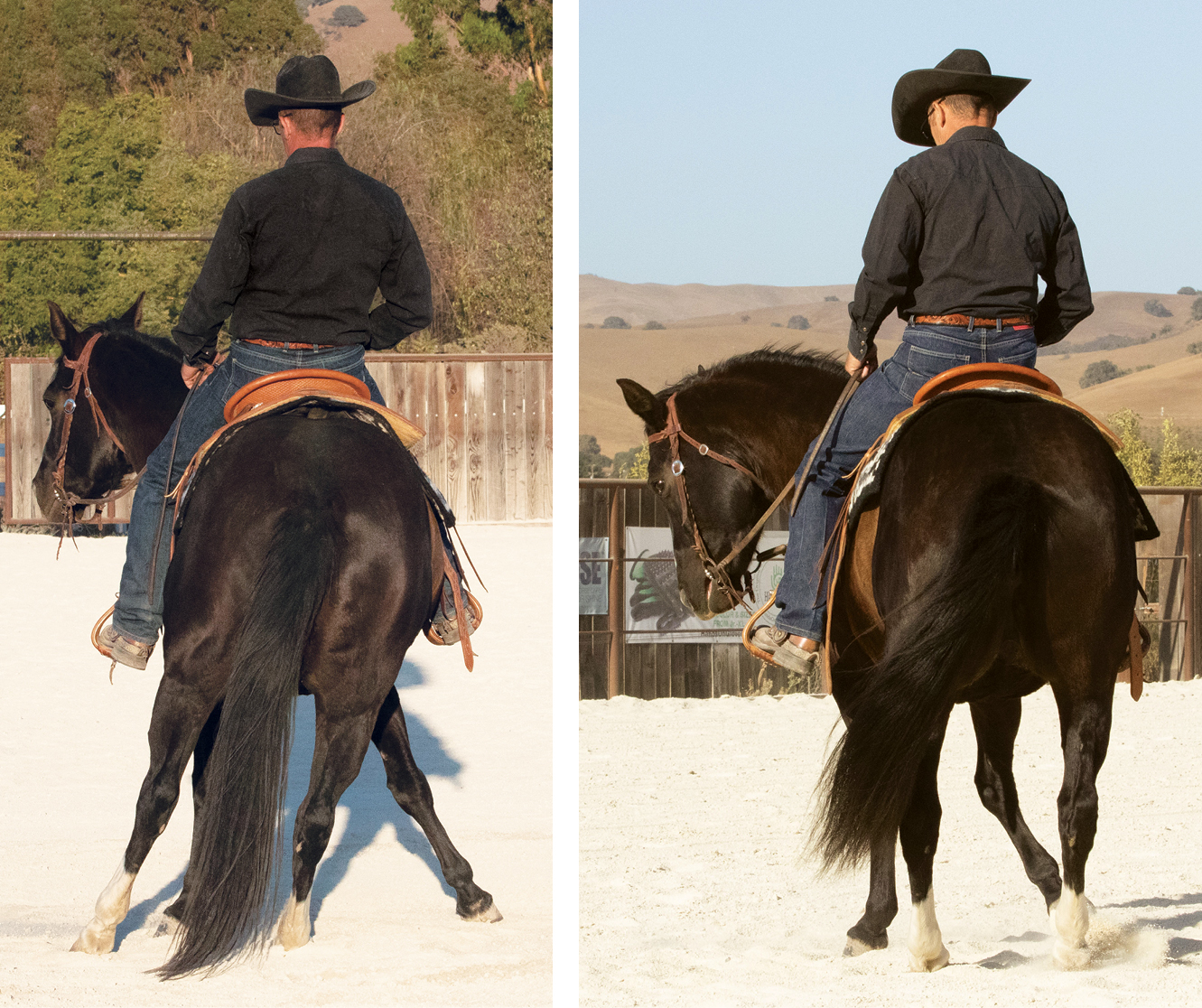Teaching a horse to pivot correctly is an essential stepping-stone in their training foundation. Whether you’re planning to horse show or just want to have control over your horse’s balance and body movements, a hindquarter turn is a staple in any well-trained horse’s repertoire.
Now, you might wonder what exactly a proper pivot looks like. A correct hindquarter turn begins with your horse crossing his outside front leg over his inside front leg as he turns in the direction you’re asking while planting the inside hind foot. Not as easy as it looks, is it?
During this maneuver, you want your horse to maintain a frame where his head isn’t too low or too high, and it’s important that his body is well balanced with a slight bend in the direction of the turn. There are a lot of ways your horse can “cheat” the turn and not keep that inside hind foot planted for the entire turn while crossing over with every step. He might try to step back rather than forward, swing his hip out from underneath you, or just walk the turn all together.
To learn the three exercises I use to teach my horses to pivot properly, read on.
[More on teaching the pivot: Plant a Pivot]
Walk the Line.
This is a great exercise to start with to introduce your horse to the concept of turning on his haunches. Simply walk your horse down a straight rail or fence, stop, back up, and immediately turn him 180 degrees in the direction away from the rail. Backing him up causes him to sit back on his hocks, setting him up for using his haunches in the turn. Your horse might not plant his foot perfectly while doing this exercise, but that’s okay. The main purpose of this is just to get him comfortable turning while his hind end is engaged. Complete this maneuver a couple of times each direction during a few rides to prepare him for the second exercise.
Be a Star.
This exercise will get your horse to start planting the correct foot when asking for a turn on the haunches. To help you visualize what you’re supposed do, imagine that you’re walking your horse in the shape of a star. First, walk the straight line of the first leg of the star shown in Step 1. Second, ask your horse to turn sharply to the inside, making the point of your star, seen in Step 2. This causes him to shift his weight to the inside foot and naturally keep that foot planted as he turns. The third step is to walk straight out of your tight turn, making the downward leg of your star. Walking out of the turn instead of just stopping encourages your horse to use forward motion while planting his inside foot, which will come in handy during the third exercise.

by starting with Step 1.
Walk a Circle.
Now that you’ve got your horse using his hind end while turning, it’s time to focus on what he’s doing with his front feet. If a horse is using his hind end too much during a turn, he’ll start to suck back and not cross his outside front leg over his inside front leg. This is a common mistake that usually results in your horse stepping behind the inside front foot with his outside foot or doing a kind of shuffle where both feet move on the same line.
To create forward motion during a turn, it’s important to make forward motion the only option. Begin by walking a small circle with your horse bent slightly to the inside of that circle. Once he’s comfortable doing this, start making your circle smaller and smaller. This will cause his inside hind leg to stay closer and closer to staying in the center of your circle each time the circle winds down. Eventually his inside foot will stay planted in the center all while maintaining forward motion. As your circle gets smaller, your horse will have to cross his outside front leg over the other, making stepping back not an option.

Note: Remember to always walk out of your turns to keep your horse from sucking back and encouraging the necessary forward motion needed to carry out a proper pivot.
When you’re ready to start teaching your horse to turn, start by introducing the first exercise and slowly adding the next two as he’s ready. This isn’t something you can teach overnight, and it’s not something that should be rushed. That can cause him to skip an important step or develop bad habits along the way. If you take it slow and never give your horse the chance to learn how to pivot incorrectly, you’ll have a perfect pivot in no time.






